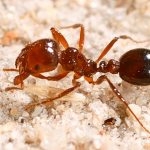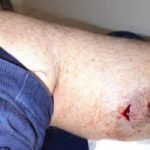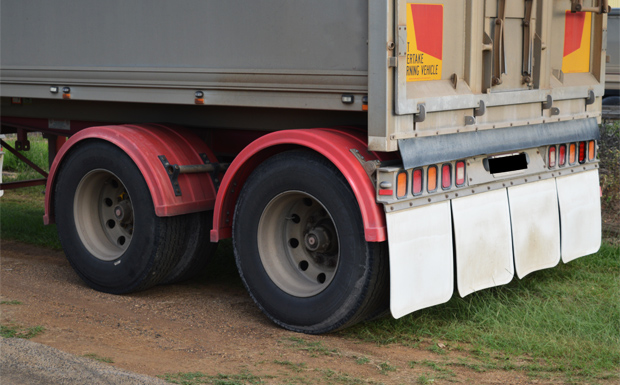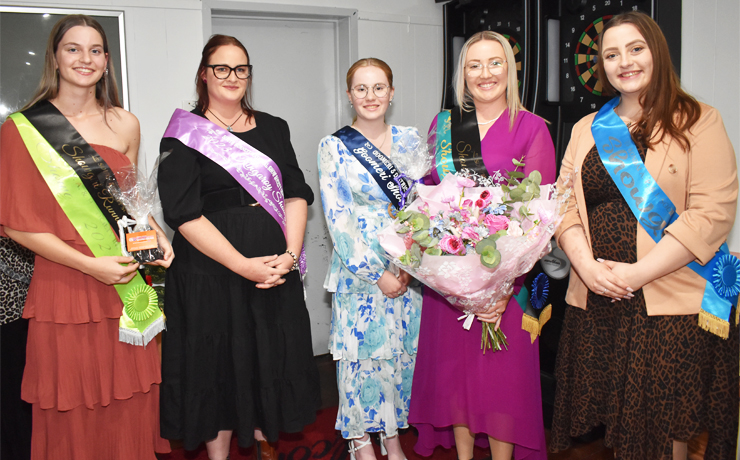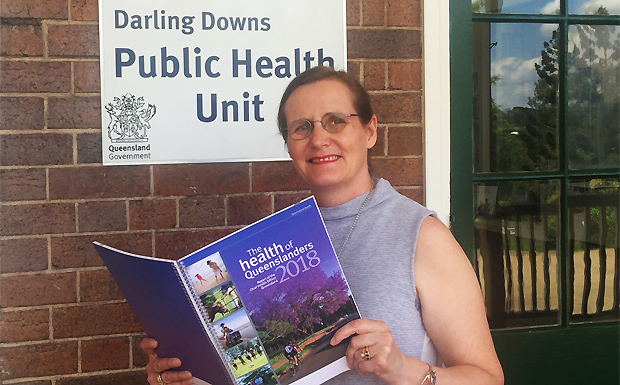
November 19, 2018
The release of a new health report shows child immunisation rates in the Darling Downs Public Health Unit area are strong, but several challenges remain.
The results are contained in the biennial “Health Of Queenslanders” report, which is compiled by Queensland’s Chief Health Officer.
The report provides a snapshot of the Queenslanders’ health in general, as well as within the Darling Downs Health area – which includes the South Burnett.
Darling Downs Public Health Unit Director Dr Penny Hutchinson said a high immunisation rate for the region’s five-year-olds was good news.
“The report shows our immunisation rate for children is sitting at 96 per cent, above the target of 95 per cent and higher than the State average of 94 per cent.
“This is an important achievement because immunisation at this level provides what we call herd immunity, providing the best protection against many vaccine-preventable diseases for the whole community.
“It is important that parents remain diligent in having their children immunised to protect them against life-threatening diseases such as whooping cough, meningococcal disease and measles.”
Dr Hutchinson said there were still several areas of concern including obesity, physical activity and smoking rates.
“The report reveals 30 per cent of adults are obese, equating to around 64,000 people,” she said.
“This is 20 per cent higher than the State average.
“It’s also a bit of a double whammy as 14 per cent of adults – or 30,000 people – are physically inactive, which is 45 per cent higher here than across the State.
“Physical activity levels for children could also be improved with 48 per cent active every day, which is slightly higher than the Queensland average but significantly less than kids in the south-west, where 62 per cent exercise daily.
“There are also alarming statistics for children’s nutrition levels, with more than half (54 per cent) of children across Darling Downs Health consuming salty or sweet snacks or confectionery every day.
“While this is close to the State average, it is a still an area of great concern as unhealthy eating habits when people are young are often carried into adulthood.”
Across Queensland, there have been 4146 hospital admissions for tooth decay among 0-9 year-olds and in the Darling Downs, 48 per cent of 5-6 year-olds have tooth decay, 11 per cent higher than the State average.
The report also showed that smoking rates were higher than the State average with one in eight adults (12 per cent) lighting up daily.
“This is 5 per cent higher than the State average with 26,000 adults smoking each day, with 16 per cent of women smoking while pregnant.
“Darling Downs Health has a Smoke-Free Healthcare Committee which has co-ordinated a strategic approach to promoting and supporting smoking cessation across the health service.
“This includes providing nicotine replacement therapies to in-patients who identify as smokers, as well as education for staff and community groups on the options available to assist with quitting smoking.
“We also have a targeted program to reduce Indigenous smoking rates including women while they are pregnant.
“This has been successful – we topped the State for Indigenous referrals to Quitline in January, and we will continue to work in this area.”
Dr Hutchinson said Darling Downs Health had an Aboriginal and Torres Strait Islander Health Action Plan which set out goals to address the disparity in health outcomes for indigenous people.
“This includes things like increasing the number of Aboriginal and Torres Strait Islander women who attend ante-natal appointments, and decreasing rates of patients being discharged against medical advice.”
She said with the region’s population growing, the number of potentially preventable hospitalisations was also increasing.
This was placing more pressure on the healthcare system.
“More than 12,000 hospitalisations were potentially preventable and could have been treated in the primary health sector,” she said.
“This is why we’re urging everyone to work with their GP to ensure they stay out of hospital if they can.
“The most common contributors were diabetes, dental conditions and chronic obstructive pulmonary or lung disease which collectively made up 46 per cent of preventable hospitalisations.”
Dr Hutchinson said the suicide rate of 40 people a year between 2013 and 2015 was also slightly higher than the State average.
On a brighter note, the report showed women in the Darling Downs and South Burnett have an average life expectancy of an extra year compared with the whole of Queensland.
“On average women in our area live to 84 whereas the State average is 83, while males’ life expectancy here matches the Queensland average of 77 years,” Dr Hutchinson said.
“However, the median age of death for Indigenous people in our area is much lower at 59 years, the same as the Queensland average.”








